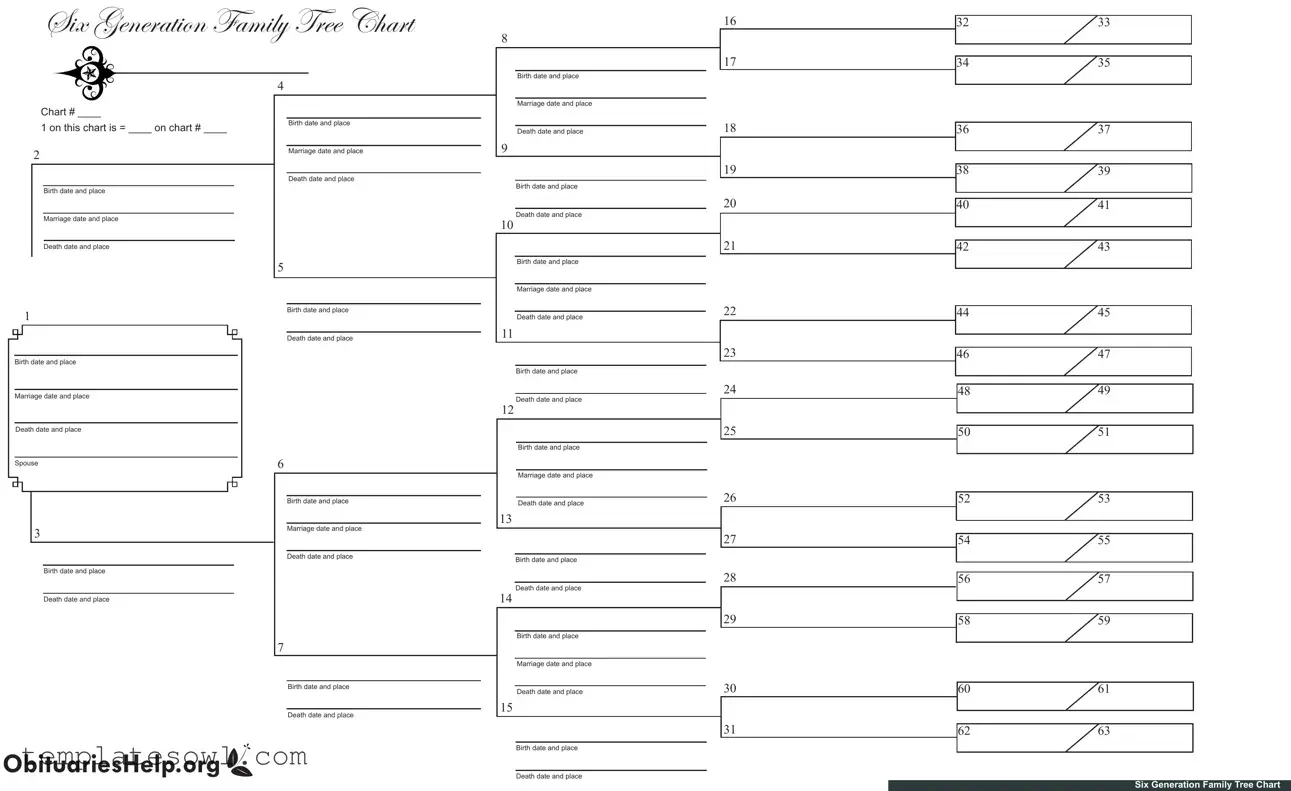What is the purpose of the Op Order form?
The Op Order form is used to create a six-generation family tree chart. It allows individuals to document vital information about their ancestors, including birth dates, marriage dates, and death dates, organized in a clear and structured manner.
How do I fill out the Op Order form?
Begin by identifying the first ancestor, or “Chart # 1.” Enter their name and relevant details in the appropriate fields. Continue filling out the information for each generation, ensuring that each ancestor is connected correctly. It's essential to maintain accuracy in both names and dates for clarity.
What information should I include for each family member?
Each entry should include the individual's name, birth date, marriage date, and death date. If you know their place of birth, marriage, or death, this information should also be added to complete the record. This comprehensive approach will enhance the family tree's detail.
Can I leave any fields blank on the Op Order form?
Yes, if you do not have specific information, leaving a field blank is acceptable. However, it is beneficial to provide as much information as possible to create a complete record of your family history.
What if my family tree includes adoptions or blended families?
You can include all relevant information about adoptive parents or stepfamilies. The form can accommodate these situations. Just be sure to clearly indicate relationships to avoid confusion.
Is there a limit to the number of generations I can include on the chart?
The form is designed to document six generations. If your family history encompasses more generations, consider summarizing or utilizing multiple charts to capture all relevant ancestors.
How should I submit the completed Op Order form?
Please follow the specific instructions provided by the organization or entity requesting the form. Some may require electronic submission, while others might prefer a printed copy. Always check for submission guidelines to ensure your form is accepted.
Is there any specific way to organize the information on the chart?
The chart typically organizes information in a hierarchical structure, starting with the oldest generation at the top and moving down to the most recent. Ensure you maintain this order for clarity and ease of understanding.
What should I do if I find errors in my family tree after submitting the form?
If you identify any errors in the information after submission, consider reaching out to the relevant party. Depending on their policies, you may be able to submit a corrected form or provide them with updated information to ensure your family tree remains accurate.
Are there tools or resources to help me research my family history?
Yes, many online resources and tools are available for family history research. Websites such as Ancestry.com, FamilySearch, and others provide valuable databases and guidelines that can aid in finding and verifying your family's information.



